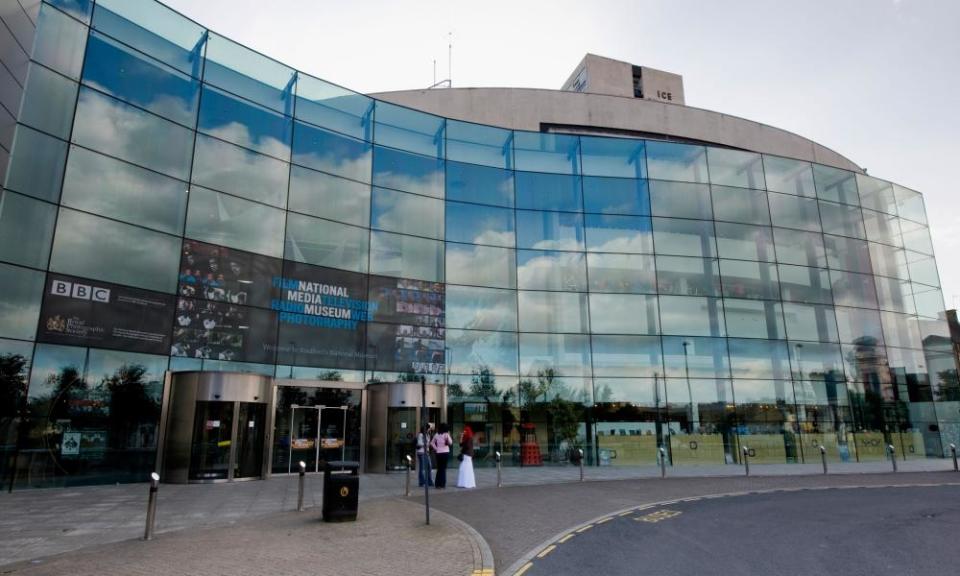National Science and Media museum in Bradford to close for £6m refurb

The National Science and Media museum is to close for a year for a “radical, once-in-a-generation” revamp that will allow more visitors to attend and provide the ability to tell stories in a more dynamic way, bosses say.
The museum in Bradford has a vast, dizzyingly diverse collection of more than 3.2m objects, from the first photographic negative to the original puppet of Zippy from Rainbow.
On Friday it announced details of a £6m capital project that will create two new “object-rich” galleries and bring changes such as improvements to the main entrance. It will mean closure from June this year until the summer of 2024, with the revamped museum open in time for Bradford’s stint in 2025 as the UK capital of culture.
The museum’s director, Jo Quinton-Tulloch, said it was an exciting, once-in-a-generation opportunity. “It is a fantastic moment for the museum. We are going to be transforming the visitor offer and it will be here for decades to come, I can’t stress that enough,” she said.
She explained it was partly about telling stories that were more relevant and meaningful to people and their lives today.
One of the galleries will have a storytelling theme and include a Dalek that draws people into the story of the BBC radiophonic workshop. Later on, visitors will be able to see the fangs worn by Christopher Lee in the 1958 Hammer horror film Dracula.
Also on display will be the cameras used by two girls to take fake photographs of the Cottingley fairies a century ago.
“Some people might think manipulation of images is only a thing of our current period, with Photoshop and cut and paste,” said Quinton-Tulloch. “But, actually, there has been manipulation almost from the beginning of photography.”
She said the aim was to show how all areas of the collection, from photography to gaming, “are embedded in every aspect of our lives”. Curators hope the museum will inspire the next generation of “creatives, inventors and scientists”.
The last refurbishment on a similar scale was in 1999, when a sharp-suited Pierce Brosnan, as James Bond, arrived in a helicopter to reopen the-then National Media Museum after a £16m refresh.
This revamp is pegged to Bradford’s city of culture year in 2025, when the museum hopes to be one of the star attractions and the city hopes to attract a million extra visitors.
The refurbishment will include remodelling two floors, opening up unused spaces and “reimagining the display and interpretation of the core collections”.
The ground floor will be reconfigured; the entrance improved and an additional lift installed – all of which will allow the museum to “welcome many more visitors”.
From February, before the closure, the displays on levels 3 and 5 will be gradually removed so the coming weeks are the time, a spokesperson said, for people to visit to say a temporary farewell to their favourite objects.
The museum is a much-loved institution, remembered by generations of schoolchildren as the place where they read news from an Autocue or flew, like a character from Jason and the Argonauts, on a magic carpet.
Related: ‘Shot two zebras. Played tennis’: Scarborough museum confronts legacy of colonial past
But it has often had identity issues and suffered fears of imminent closure.
It opened as the National Museum of Photography, Film and Television in 1983 but became more than that, and was renamed the National Media Museum in 2006. Many people had no idea what that really meant.
In 2016 there was fury in some quarters when custody of its world-famous photography collection was moved to the V&A. The next year it opened its new interactive Wonderlab gallery and was renamed again, this time becoming the National Science and Media Museum.
Despite its popularity, the museum has been close to closure. In 2013 it was disclosed it might have permanently shut down if the Treasury had imposed a widely feared 10% funding cut on the Science Museum Group and its museums in London, Manchester, York and Bradford.

